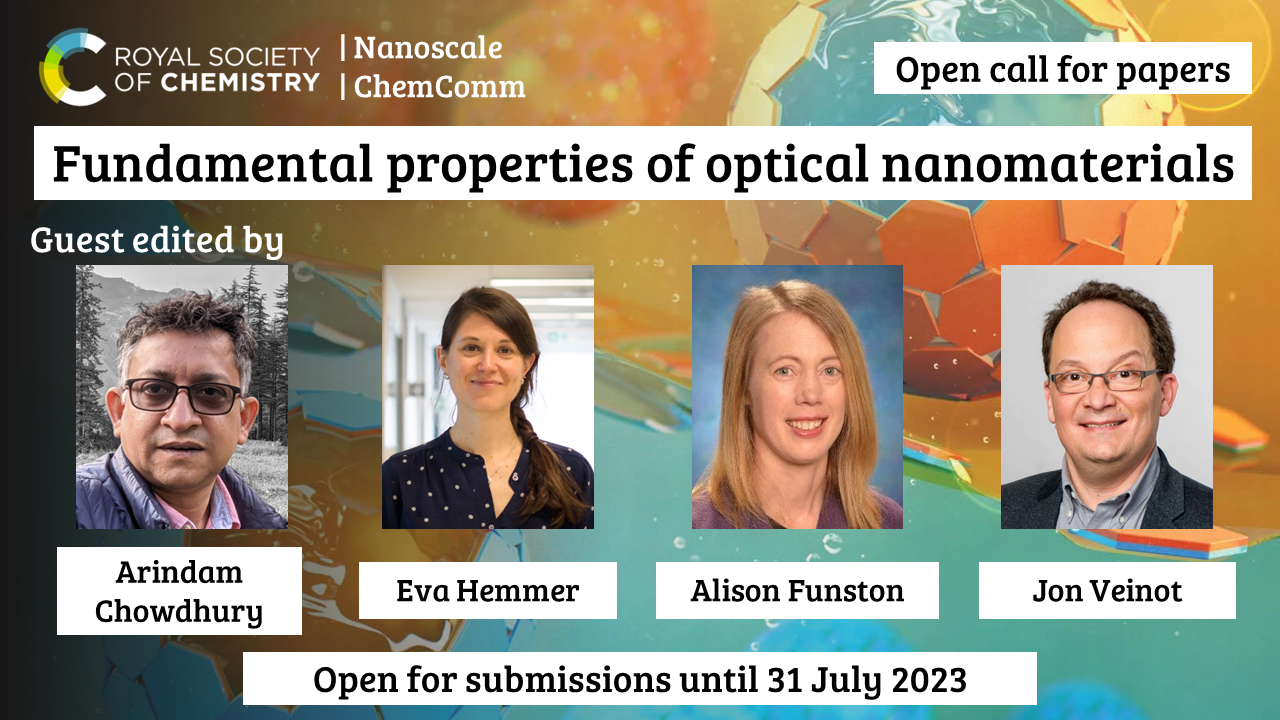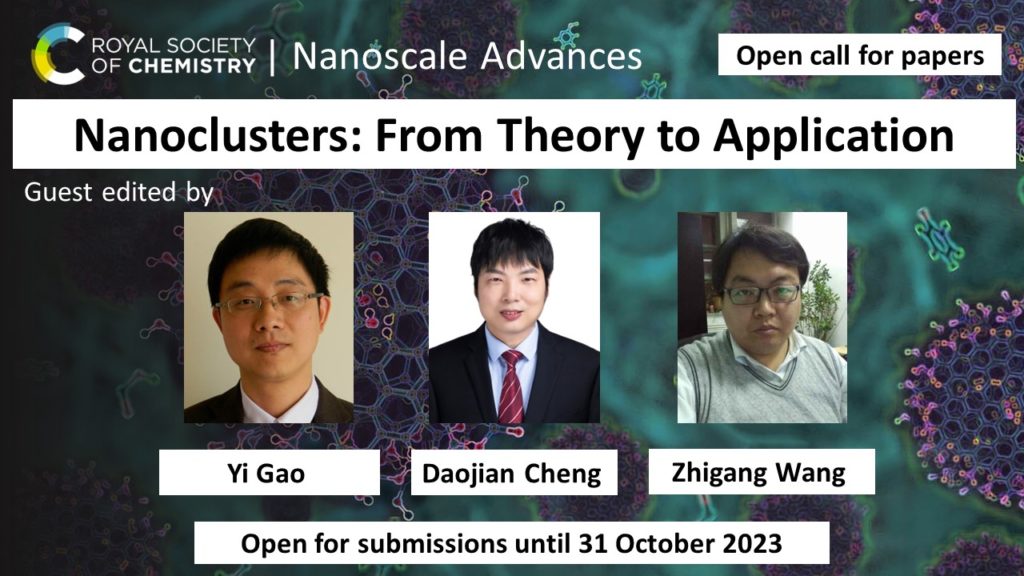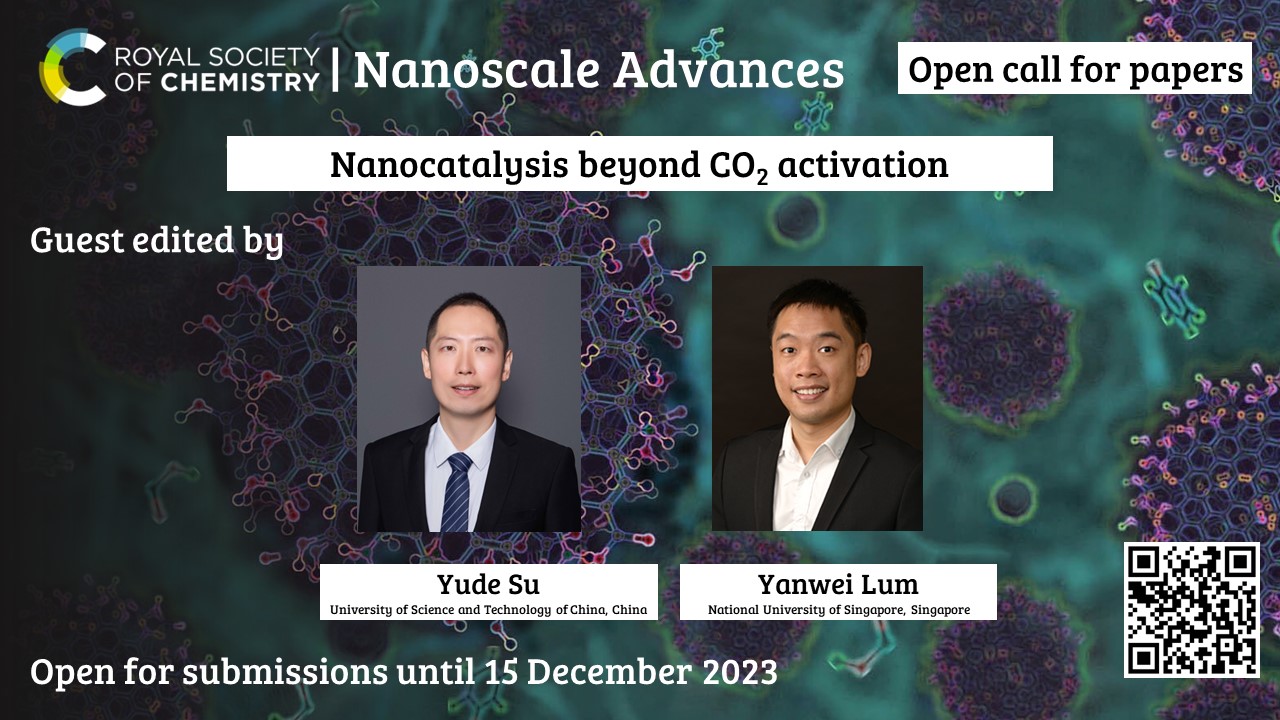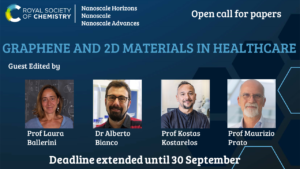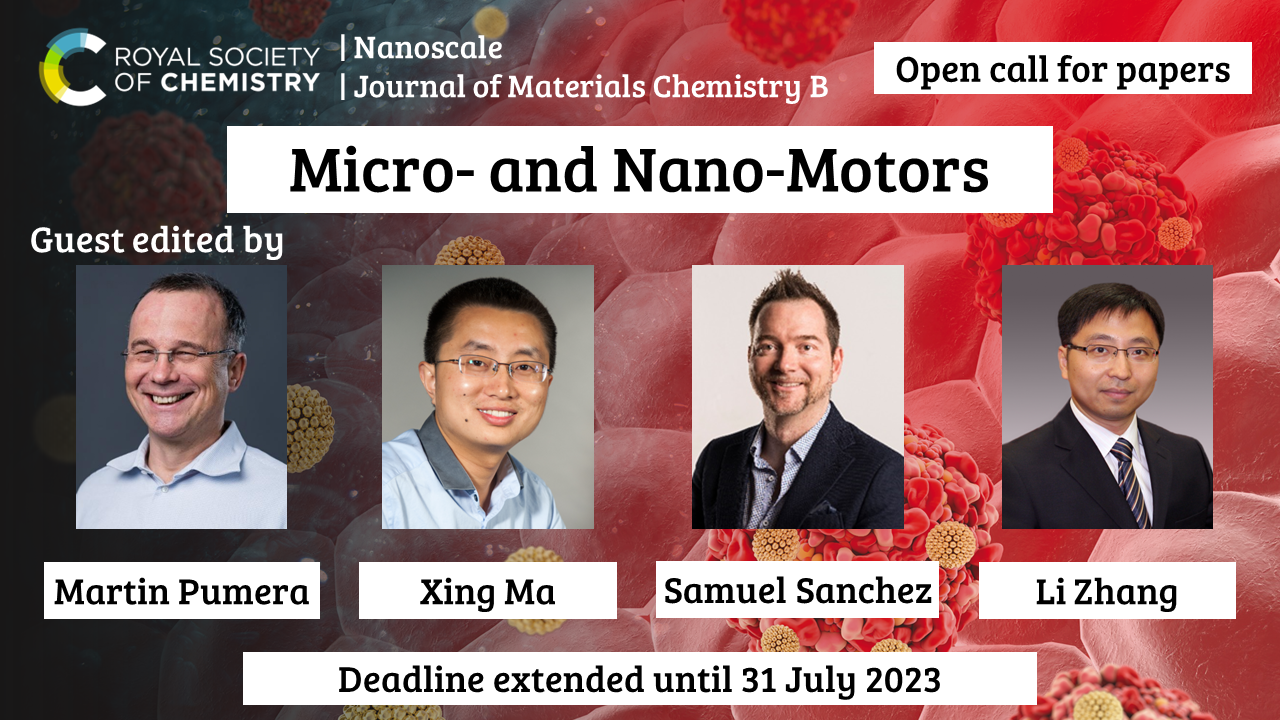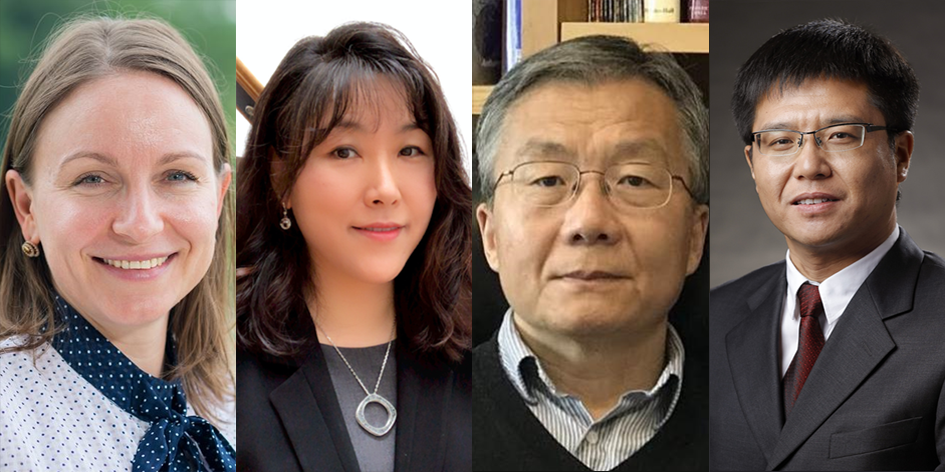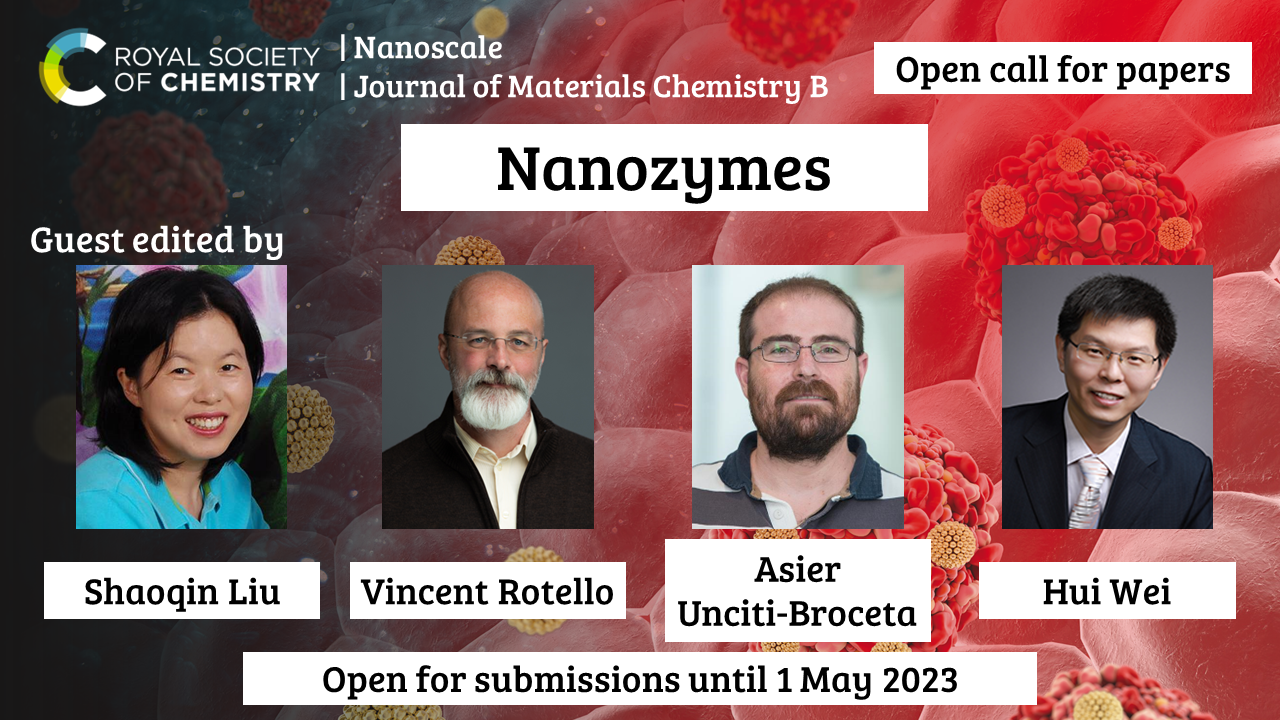Call For Papers: Theranostic nanoplatforms for biomedicine
Guest edited by Nguyen T. K. Thanh, Sophie Laurent, Sylvie Begin-Colin and Teresa Pellegrino
We are delighted to announce a call for papers for our latest online themed collection in Nanoscale on Theranostic nanoplatforms for biomedicine that is being guest edited by Professor Nguyen T. K. Thanh (University College London, UK), Professor Sophie Laurent (University of Mons, Belgium), Professor Sylvie Begin-Colin (University of Strasbourg, France) and Professor Teresa Pellegrino (Italian Institute of Technology, Italy).
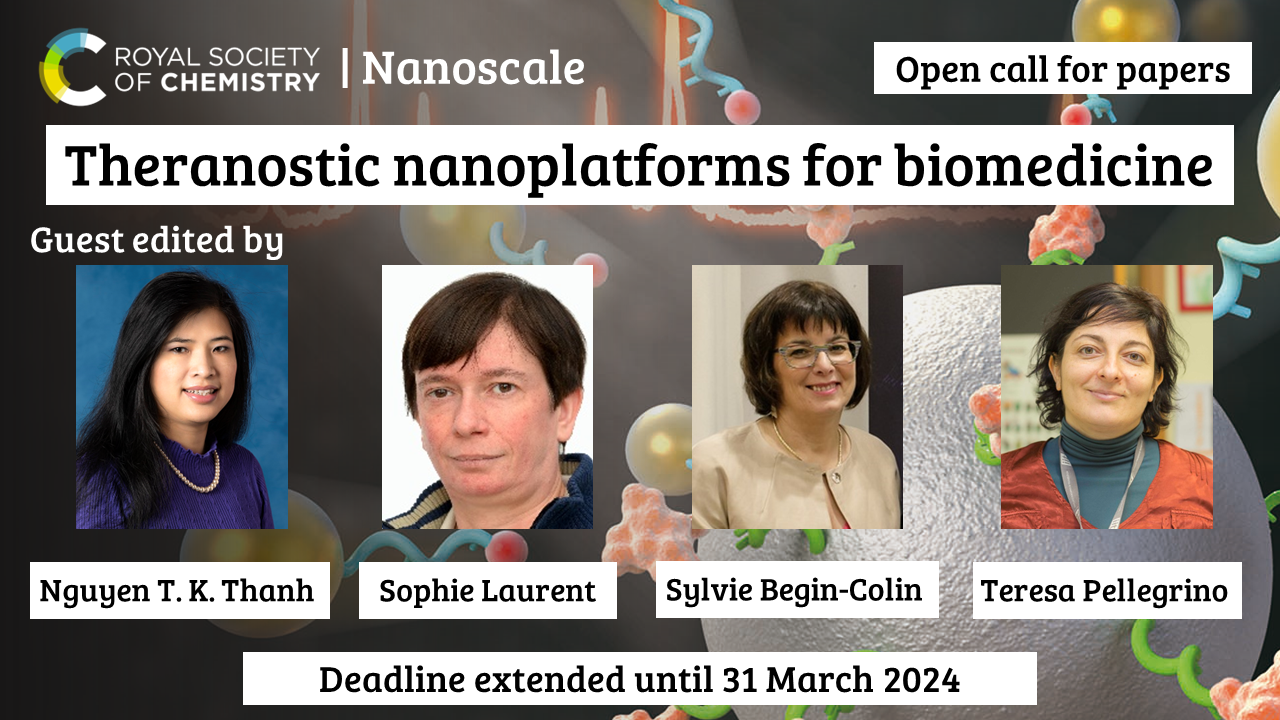
For nanomedicine to fill its promise, either direct intratumoral injection or active targeting with affinity ligands to achieve favourable specificity and biodistribution profiles is critical for accurate detection, monitoring and therapeutic efficacy. Such smart approaches, when translated to clinical uses, will have a great impact on the management of cancer and other diseases to improve patient survival and quality of life. However, for further clinical translation of nanoplatforms, a key step is their scale-up.
This new collection in Nanoscale focuses on the design of multifunctional hybrid nanomaterials for theranostics in biomedicine, with a focus on the scaling-up of these nanomaterials for translational studies. The scope of this collection loosely aligns with an accompanying symposium held at the 2023 Spring E-MRS meeting: Symposium J – Design and scaling up of theranostic nanoplatforms for health: towards translational studies, in Strasbourg, from 29 May – 2 June 2023. Potential topics include but are not limited to:
- Design, synthesis and characterization of nanoparticles: inorganic, polymers, liposomes, dendrimers
- Targeting strategies
- Multimodal Imaging (e.g., MRI, MPI, SPECT, PET)
- Multimodal therapy (e.g., hyperthermia, curie therapy)
- Drug delivery
- Nanotoxicology
- In vitro and in vivo validation of nanoplatforms combining multimodal imaging and therapies
- Scaling-up strategies of nanoplatform synthesis
- New synthesis processes taking into account good manufacturing practice (GMP) and environmental considerations
This call for papers is open for the following article types:
- Communications
- Full papers
Open for submissions until 31 March 2024
If you would like to contribute to this themed collection, you can submit your article directly through the Nanoscale online submission system. Please mention that this submission is a contribution to the Theranostic nanoplatforms for biomedicine collection in the “Themed issues” section of the submission form and add a “Note to the Editor” that this is from the Open Call. The Editorial Office reserves the right to check suitability of submissions in relation to the scope of both the journal and the collection, and inclusion of accepted articles in the final themed issue is not guaranteed.
Please also note that all submissions will undergo our normal rigorous peer review processes including an initial assessment prior to peer review, and that peer review and acceptance are not guaranteed.
If you have any questions about the journal or the collection, then Edward Gardner, the Development Editor for Nanoscale, would be happy to answer them. You can contact him by emailing the journal inbox.
With best wishes,
Professor Nguyen T. K. Thanh, University College London, UK
Professor Sophie Laurent, University of Mons, Belgium
Professor Sylvie Begin-Colin, University of Strasbourg, France
Professor Teresa Pellegrino, Italian Institute of Technology, Italy











